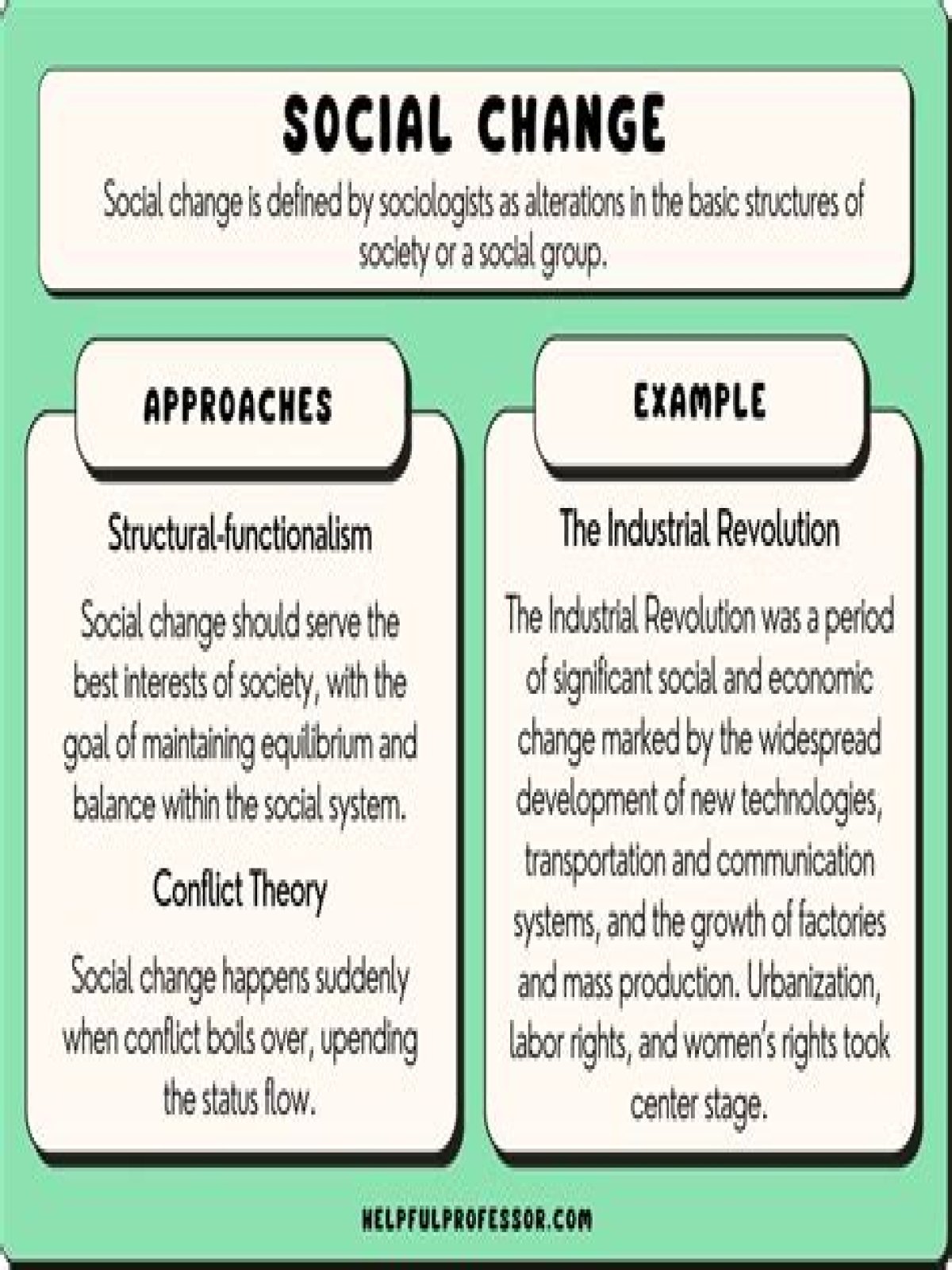Subsequently, one may also ask, what are the four processes of social change?
Process of Social Change, Invention, Accumulation, Diffusion. An American Sociologist William Fielding Ogburn suggests that social change occurs in culture and cultural evolution is the result of the following is the process of social change which includes: Invention. Accumulation.
Additionally, what are the 3 causes of social change? There are numerous and varied causes of social change. Four common causes, as recognized by social scientists, are technology, social institutions, population, and the environment. All four of these areas can impact when and how society changes.
Correspondingly, what are some examples of social change?
Examples of significant social changes having long-term effects include the industrial revolution, the abolition of slavery, and the feminist movement. Today's sociologists readily acknowledge the vital role that social movements play in inspiring discontented members of a society to bring about social change.
What is the study of social change?
Social change is the significant alteration of social structure and cultural patterns through time. Like other foci of study in sociology, the study of social change has macro and micro components, and they have waxed and waned in popularity over the course of the 20th century.
Why do we need social change?
What does social change mean?
What is the mean of society?
What are the causes and consequences of social change?
In sum, they influence our ways of life.
- Technological and Economic Changes. a) Agricultural advancements.
- Conflict and Competition. Examples:
- Political and Legal Power.
- Ideology.
What is social change and its characteristics?
What are six factors that stimulate social change?
- Technology.
- Population.
- War and conquest.
- Diffusion.
- Values and beliefs.
- Physical environment.
What are the factors affecting social change?
- Physical Environment: Certain geographic changes sometimes produce great social change.
- Demographic (biological) Factor:
- Cultural Factor:
- Ideational Factor:
- Economic Factor:
- Political Factor:
What is positive social change?
What are the examples of social issues?
- homelessness.
- bullying.
- hunger.
- drug abuse.
- child abuse.
- unemployment.
- gender discrimination.
How do you measure social change?
What is the meaning of social problems?
How do you promote social change?
- Share Important Information and News.
- Build an Engaged Community.
- Provide Training and Education.
- Receive Ground-Level Reports.
- Take Immediate Action.
- Raise Funds.
- Attend an Online University.
How does social change affect education?
What is the nature of social change?
How do students deal with social change?
- Flip the script on stigma and peer pressure.
- Use nudges to stimulate contingency planning.
- Make motivation and reflection a daily part of the student experience.
